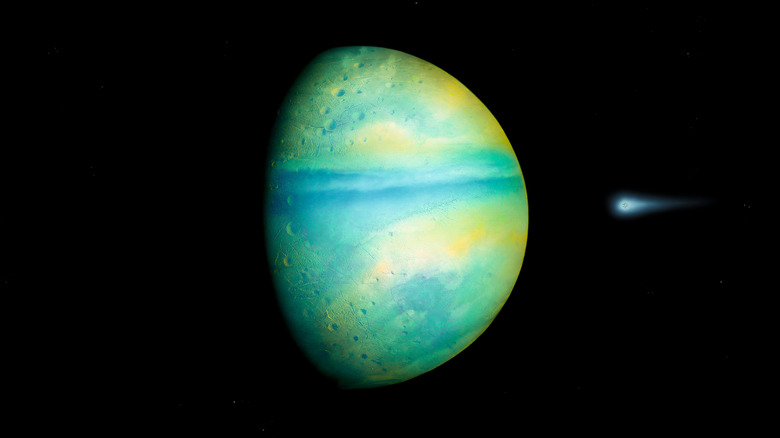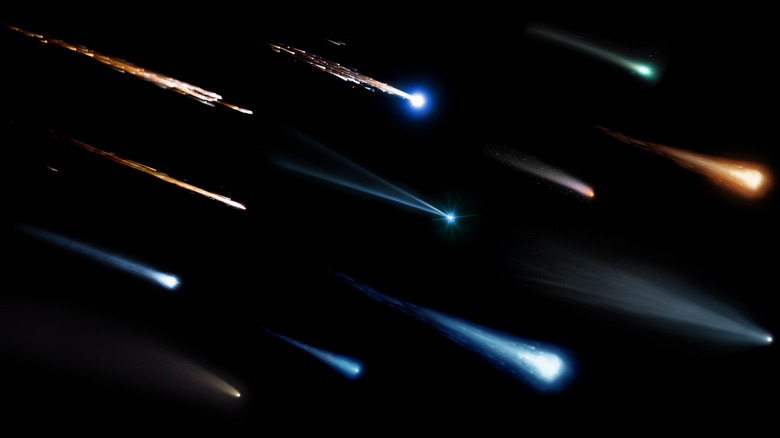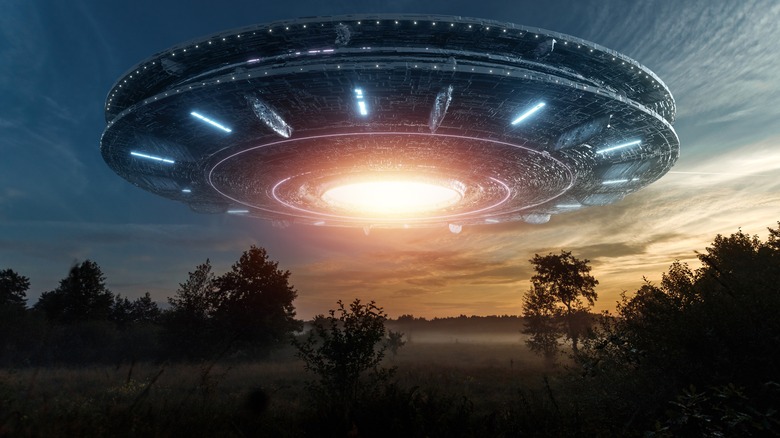The Mysterious Phenomenon The Kepler Space Telescope Discovered
The Kepler Space Telescope is a marvel of human achievement. The satellite sits in low Earth orbit and is directed outward, hunting for the existence of exoplanets swirling in orbit around distant stars (like the TESS satellite). An exoplanet is a planet that orbits a star outside of our solar system (via SETI). In 2006, the International Astronomical Union created a standard definition of what a planet is, stating that it must be spherical in shape (formed in this way by having enough mass to create a sizeable gravitational force), revolve around a star (such as the Sun, in our solar system), and act as the largest body in the direct vicinity of their orbit around that star (via IAU).
The Kepler Space Telescope searches for stars far beyond our solar system and records dips in light emitted from them in an effort to understand the bodies that traverse around them in orbits like the planets of our own solar system. NASA reports that since its launch in 2009, the Kepler telescope has discovered more than 2,600 exoplanets out there in the universe.
One finding has stumped researchers in the years since its existence came to light. The telescope notes changes in light emanating from distant stars, and one system has shown itself to behave in a rather odd pattern that doesn't appear to fit with our known understanding of planetary movement.
The system has been a source of great speculation and debate, and it remains a mystery to this day.
Kepler has located a unique and striking phenomenon
In 2011, scientists made a note of something quite interesting that the telescope had captured. The Atlantic reported that this finding appears in line with the tight debris cloud that might surround a young star. However, the star identified by Kepler is quite old and therefore scientists can't yet deduce what is floating around in its orbit. Researchers have worked through a number of hypotheses to try to figure out what this debris might be, but none have proved conclusive so far.
One hypothesis that seems the most likely is perhaps one that requires the highest degree of coincidence. Because the star at the center of this system is old enough to have cleared an immature debris field, scientists have landed on the idea that another star could have passed through this system, pulling a large field of comets along with it. The problem, however, is that just like the debris of an immature star system would eventually clear as a result of solar and planetary gravitational pull, so too would a wave of comets eventually make their way into orbit around other bodies or crash into them and be consumed. The existence of this debris field would indicate that its establishment was more recent.
If this explanation were true, the timing would be impeccable, lending itself to a degree of kismet that nearly defies logic itself.
Sci-fi fans might point to extraterrestrial structures, but the verdict remains elusive
Those steeped in the world of science fiction often come to another conclusion that scientists are hesitant to venture into. Rather than a natural phenomenon that created an unlikely field of debris around this distant star, it's certainly possible that another civilization exists out there in the cosmos and has built a network of artificial celestial objects, in the same way that humans have continued to launch satellites into space around our own planet and solar system.
Space notes that the initial writeup produced by the research team exploring this phenomenon only evaluated the potential explanations falling under circumstances that might be deemed "natural." Specifically, they did not consider the possibility that an alien lifeform exists in this distant system and has excelled in creating structures sitting high in orbit around an exoplanet or the star itself, in the way that a hypothesized Dyson sphere would operate (via EarthSky).
This would spell a distinct change in culture for researchers, however, and it's notable that the stigma surrounding academic and professional hypotheses of alien life remains a barrier to modern hypotheses (via Bloomberg). Even still, The New York Times has noted that researchers have found phosphine gas on the surface of Venus, pointing to the potential for life on our nearest neighbor. Taken together, it's likely that scientists might not be hesitant to exclaim a finding of distant life if they believed it to be true.


